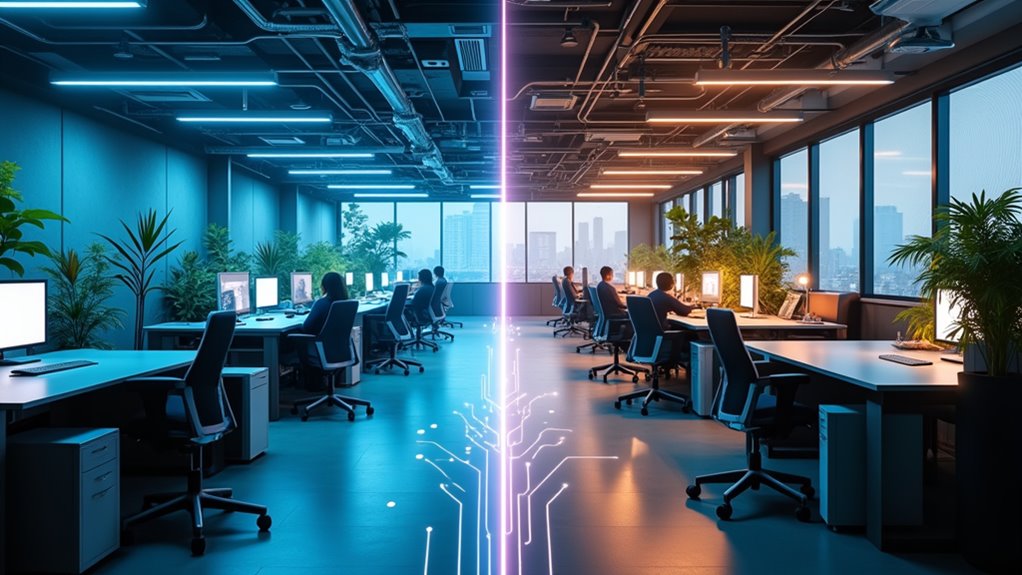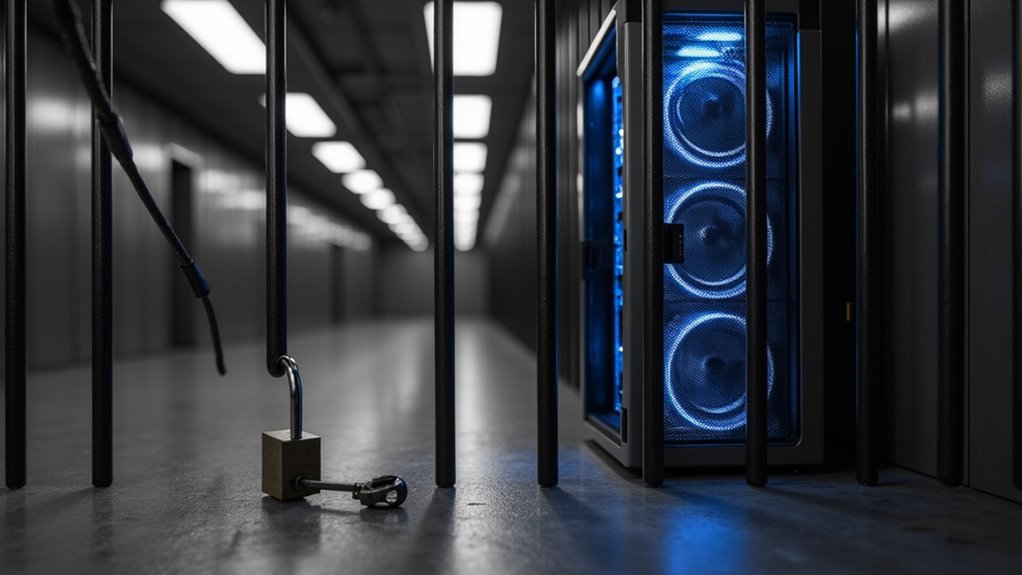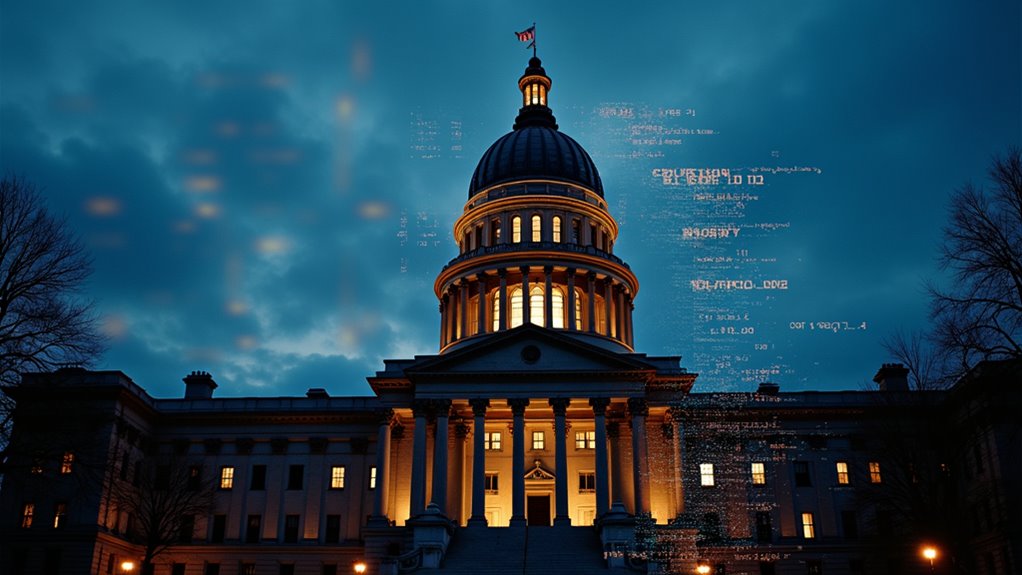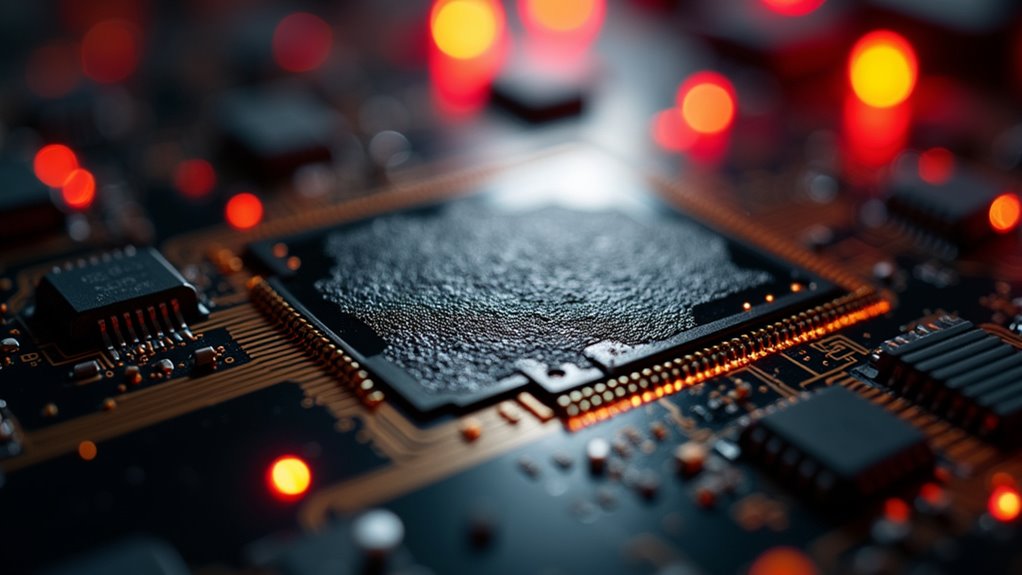AI’s impact on workplace equality remains a double-edged sword. While 72% of businesses have adopted AI, the benefits aren’t flowing evenly—high-income knowledge workers gain advantages while manual laborers face displacement risks. Half of Americans believe AI will worsen income inequality, yet McKinsey projects $4.4 trillion in productivity growth. The technology itself isn’t biased, but implementation choices matter enormously. The difference between dystopia and utopia? Those pesky human decisions about how we actually use these fancy algorithms.
Where exactly are we headed with the AI revolution in our workplaces? The statistics paint a picture that’s about as clear as a Magic 8-Ball saying “reply hazy, try again.” On one hand, 72% of businesses have adopted AI for at least one function, yet only 11% of employees use it weekly. Talk about a disconnect between the corner office and the cubicles.
The future looks both promising and perilous. By April 2025, research confirms AI generally boosts productivity and narrows skill gaps. Great news, right? Well, hold onto your ergonomic chairs because 300 million jobs worldwide could vanish into the digital ether. One in four CEOs are already sharpening their virtual axes, expecting AI-driven job cuts of 5% or more in 2024.
Not everyone’s feeling the AI anxiety equally. Gen Z workers (18-24) are 129% more likely than their retirement-age colleagues to worry about AI making their jobs obsolete. It’s like comparing someone who grew up with TikTok to someone who remembers rotary phones—entirely different perspectives on technological change.
Digital natives fear AI upheaval, while old-school workers remain unfazed by yet another tech revolution.
The economic impact? About half of Americans believe AI will lead to greater income inequality. High-income knowledge workers currently stand to gain the most from AI productivity boosts, while those in manual labor risk being left behind—like extras in a dystopian sci-fi film no one wants to star in. This concern is validated by the fact that AI models’ computing power doubles every five months, creating an accelerating gap between industries that can harness this growth and those that cannot. The talent shortage in AI expertise further widens this divide, with specialized skills becoming increasingly valuable yet remarkably scarce in the job market.
There are some plot twists in this narrative, though. Customer service agents, typically in the 20th income percentile, might actually benefit from AI assistance. McKinsey projects that AI could add $4.4 trillion in productivity growth across the economy.
And 20 million workers are expected to retrain in new careers or AI use in the next three years.
The big question remains: will AI widen the gap between haves and have-nots, or could it eventually level the playing field? Current evidence suggests we’re headed for more inequality unless intervention happens. The technology itself isn’t biased—but how we implement it certainly can be.
Perhaps the real revolution isn’t in the AI itself, but in how thoughtfully we choose to deploy it.









